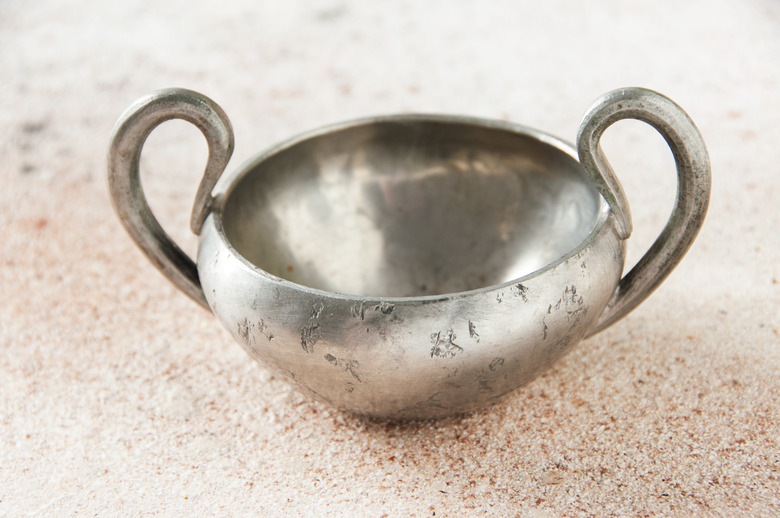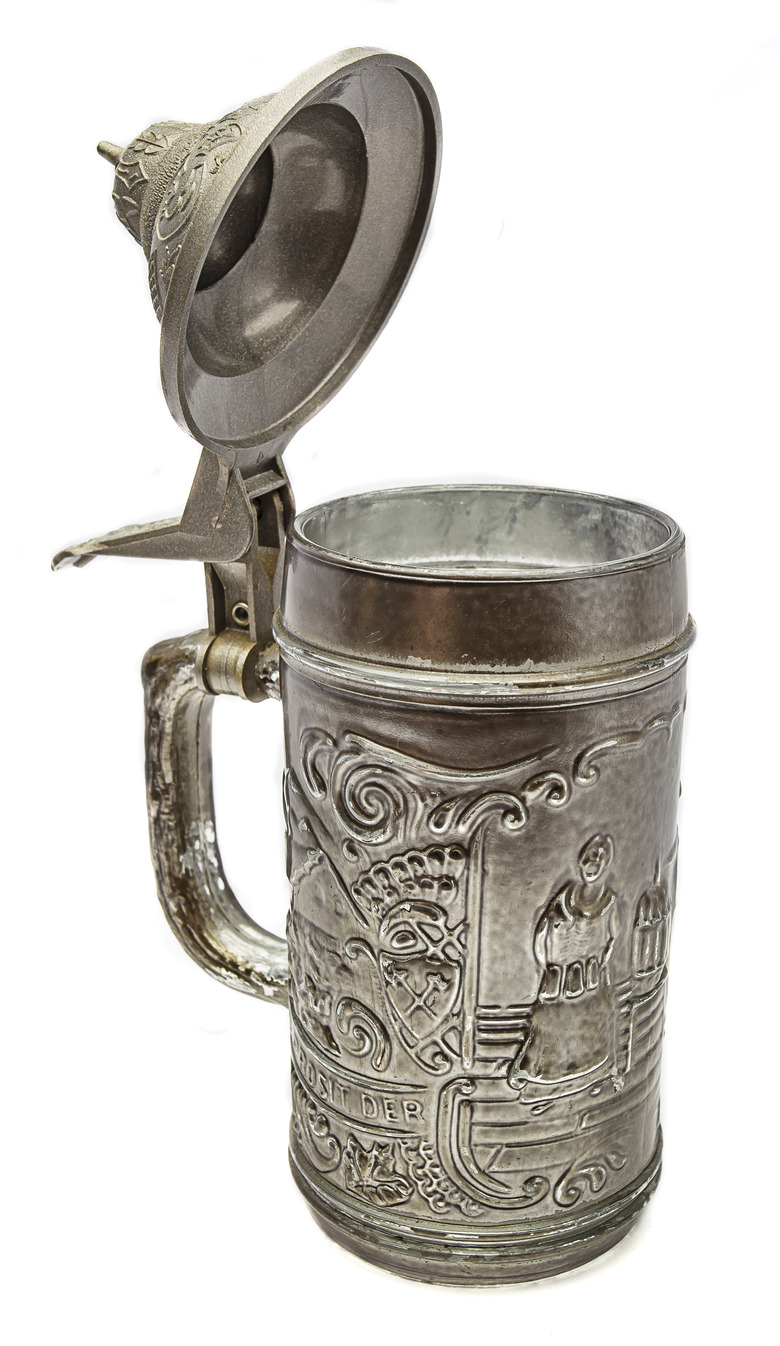How To Clean Pewter
The alloy pewter— whether in the form of an antique plate or a piece of modern jewelry—is fairly durable and easy to care for, thanks to its composition. While most pewter contains primarily tin, the hardening agents used in the alloy vary greatly from ancient to modern times. Lead was once a common additive, while modern pewter usually favors copper or antimony. No matter what the exact composition of your pewter collectibles, cleaning them is simply a matter of using hot, soapy water. An occasional polish can also be used from time to time if your pewter piece is the shiny variety.
The Hot Water Method
The Hot Water Method
A bowl of hot, soapy water is all that's needed for general pewter cleaning. This method works great on objects that are solely pewter, such as decorative figures or plates. If the object is made of pewter with other decorative embellishments, such as wood or glass, work around the non-pewter areas unless you're sure they can handle soap and water. Many modern, completely pewter items, such as tankards, can also be hand-washed in the sink.
- Fill a bowl with hot tap water, then add a squirt of a mild dish soap.
- Swish the water around a bit, then dip a sponge into the water, wringing out excess liquid.
- Wipe the pewter down with the sponge.
- Rinse the sponge, wring it again, then wipe the pewter down once more.
- Dry the piece off with a lint-free, scratch-free microfiber or cotton cloth. Use a cloth that contains no dyes, as the dye could potentially transfer onto the metal and stain it.
Warning
Do not put pewter in the dishwasher, as the chemicals in dishwasher detergent can be too harsh for this alloy.
Homemade Pewter Polish
Homemade Pewter Polish
Make your own non-toxic pewter polish with simple ingredients you probably have at home: vinegar, flour, and salt. This polish is designed specifically for polished pewter, the shiniest variety. It also works on satin pewter, which looks slightly duller and more grainy. Oxidized pewter, which looks dark, should not be polished, as this could affect its appearance. Antique objects that may lose their value if cleaned should also not be polished or washed.
- Mix 1 cup white vinegar with 1/2 cup flour, stirring until a paste forms.
- Stir in 1 teaspoon salt to make the paste mildly abrasive, if desired.
- Dip a sponge or non-abrasive white cloth into the paste. Rub the paste over the entire pewter object.
- Leave the paste in place for at least 30 minutes, or until it dries. Wipe the dried material off with a soft white cloth.
- Wash the pewter again with mildly soapy hot water. Dry the piece with a white lint-free cloth
Polishing Pewter with Commercial Polish
Polishing Pewter with Commercial Polish
Besides homemade polishes, a store-bought polish designed for pewter or most metal also does the job. Read the product label carefully before use to ensure the product works well on pewter, and that it's non-toxic, especially if using on pewter mugs or dishware. Some metal polishes such as Brasso contain toxins that can also irritate the skin, lungs, and eyes.
To polish the pewter, first clean it with soap and water, then dry it. Apply a small amount of the polish to a sponge, as directed on the polish label, then rub it over the pewter object. Do not apply the polish to areas that touch food or drinks, unless the label states the product is non-toxic and safe for kitchenware.
Keeping Pewter in Good Shape
Keeping Pewter in Good Shape
To keep your pewter item looking its best, keep it away from potentially corrosive, acidic liquids. While this may be easy for household decor pieces, a tankard or plate used regularly may come into contact with corrosive foods and drinks. Sodas, for instance, are acidic enough to damage pewter. Immediately rinse your pewter kitchenware after use to help prevent corrosion or discoloration caused by foods and beverages.


